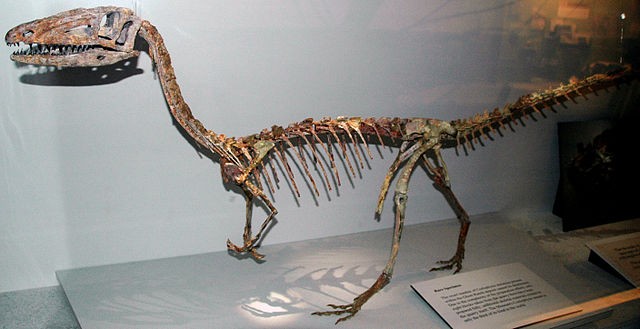Theropods were a diverse group of bipedal, carnivorous dinosaurs that dominated the ecosystems of the Mesozoic Era. Ranging in size from small, agile predators to massive, towering giants, theropods were the apex predators of their time. Here’s an overview of these fascinating dinosaurs:
Page Contents
Toggle1. Classification and Diversity:
- Suborder: Theropoda.
- Wide Range of Sizes: Theropods varied greatly in size, from the tiny, chicken-sized Microraptor to the enormous Tyrannosaurus rex.
- Feathered and Non-feathered: While many small theropods had feathers, some larger species like T. rex are believed to have had scales.

2. Bipedal Locomotion:
- Two-legged Movement: All theropods were bipedal, walking and running on their hind limbs.
- Grasping Hands: Many theropods had three-fingered hands with sharp claws, allowing them to grasp and manipulate objects.
3. Carnivorous Diet:
- Predatory Adaptations: The majority of theropods were carnivorous, equipped with sharp teeth and claws for capturing and consuming prey.
- Meat-Eating Strategies: Some theropods were agile and likely hunted in packs, while others were solitary ambush predators.
4. Teeth and Skull Adaptations:
- Diverse Teeth Shapes: Theropods had a variety of tooth shapes, reflecting different feeding strategies. Some had serrated teeth for cutting through flesh, while others had more conical teeth for crushing bones.
- Cranial Diversity: Skull shapes varied widely, from the long-snouted Allosaurus to the robust skull of T. rex.
5. Feathered Dinosaurs:
- Evidence of Feathers: Fossil evidence, especially from smaller theropods like Velociraptor and Archaeopteryx, suggests that many theropods had feathers.
- Feather Function: Feathers may have played a role in insulation, display, or even aiding in aerodynamics in the case of some smaller theropods.
6. Evolution of Flight:
- Bird Ancestry: Birds are considered a group of theropod dinosaurs, with Archaeopteryx being a transitional form showing both reptilian and avian features.
- Feathered Wings: The evolution of feathers and the development of wings were crucial steps in the eventual evolution of flight in some theropod lineages.
7. Notable Theropods:
- Tyrannosaurus rex: One of the largest theropods, known for its massive size and powerful jaws.
- Velociraptor: A smaller, feathered theropod with a distinctive sickle-shaped claw on its hind limbs.
- Allosaurus: A large, carnivorous dinosaur with a long tail and a prominent head crest.
- Spinosaurus: A massive theropod with a sail-like structure on its back, adapted to aquatic environments.
8. Social Behavior:
- Evidence of Social Groups: Some theropod fossils suggest social behavior, with individuals potentially living and hunting in groups.
- Parental Care: Fossil evidence of nests and juvenile theropods suggests that at least some species exhibited parental care.
9. Mass Extinction:
- End of the Mesozoic Era: The majority of theropods, along with many other dinosaur groups, went extinct at the end of the Cretaceous Period, about 66 million years ago.
- Asteroid Impact: The Chicxulub asteroid impact is considered a major factor in the mass extinction event.
Theropods were a diverse and dominant group of dinosaurs, showcasing a wide range of adaptations and behaviors. The study of theropods contributes not only to our understanding of dinosaur evolution but also sheds light on the origins of modern birds and the dynamics of Mesozoic ecosystems.











